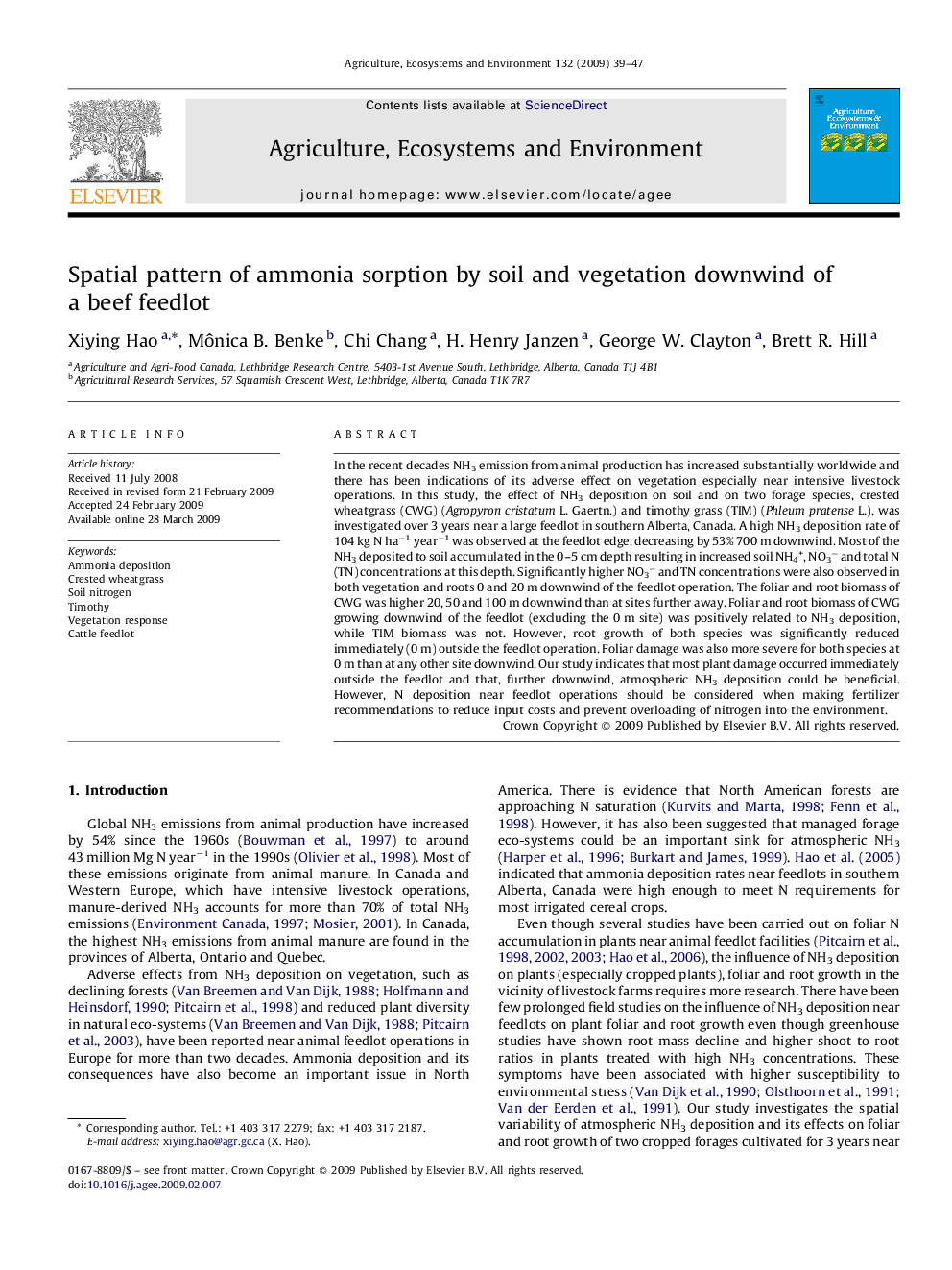| Article ID | Journal | Published Year | Pages | File Type |
|---|---|---|---|---|
| 2415140 | Agriculture, Ecosystems & Environment | 2009 | 9 Pages |
In the recent decades NH3 emission from animal production has increased substantially worldwide and there has been indications of its adverse effect on vegetation especially near intensive livestock operations. In this study, the effect of NH3 deposition on soil and on two forage species, crested wheatgrass (CWG) (Agropyron cristatum L. Gaertn.) and timothy grass (TIM) (Phleum pratense L.), was investigated over 3 years near a large feedlot in southern Alberta, Canada. A high NH3 deposition rate of 104 kg N ha−1 year−1 was observed at the feedlot edge, decreasing by 53% 700 m downwind. Most of the NH3 deposited to soil accumulated in the 0–5 cm depth resulting in increased soil NH4+, NO3− and total N (TN) concentrations at this depth. Significantly higher NO3− and TN concentrations were also observed in both vegetation and roots 0 and 20 m downwind of the feedlot operation. The foliar and root biomass of CWG was higher 20, 50 and 100 m downwind than at sites further away. Foliar and root biomass of CWG growing downwind of the feedlot (excluding the 0 m site) was positively related to NH3 deposition, while TIM biomass was not. However, root growth of both species was significantly reduced immediately (0 m) outside the feedlot operation. Foliar damage was also more severe for both species at 0 m than at any other site downwind. Our study indicates that most plant damage occurred immediately outside the feedlot and that, further downwind, atmospheric NH3 deposition could be beneficial. However, N deposition near feedlot operations should be considered when making fertilizer recommendations to reduce input costs and prevent overloading of nitrogen into the environment.
